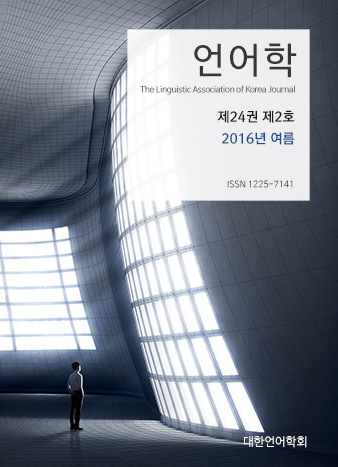대한언어학회 전자저널

-
A Corpus-based Study on the Use of English Present Perfect by Chinese EFL Learners
-
A Study of Curricular Components of English/Korean-Language Textbooks
-
The Effects of Listening Encoding Strategy Use on Korean EFL Learners’ EAP Listening Comprehension
-
A Study on the Correlation between Self-Efficacy Beliefs and Strategies in English Reading
24권 2호 (2016년 6월)
- A Study of Curricular Components of English/Korean-Language Textbooks
-
Youngroung Kim
Pages : 57-71
Abstract
Keywords
# curricular components # genres # multicultural society # English/Korean-language textbooks
References
- Action, W. (1979). Second language learning and perception of difference in Attitude. Unpublished doctoral dissertation. University of Michigan.
- Anthony, E. (1963). Approach, method, and technique. English Language Teaching, 17, 63-67.
- Beatty, J.N. (1992). Literature and Language. Illinois: McDougal, Littell & Company.
- Brown, H.D. (2007). Teaching by Principle. New Jersey: Prentice Hall.
- Brown, H.D. (2007). Principles of Language Learning and Teaching. New Jersey: Prentice Hall.
- Kim, Y.-R. (2011). Improvement of EFL Learners’ Reading Proficiency and Constitutions of Genres in Textbooks. Studies in Modern Grammar, 63, 197-215.
- Kim, Y.-R. (2012). A Need for Commensuration Between the Questions of the Teacher Recruitment Exam and the Curricula of the Department of English Education. Studies in Modern Grammar, 69, 93-115.
- Kim, Y.-R. (2014). A Need to Explore and Construe Quantification in a highschool textbook. Studies in Modern Grammar, 77, 117-133.
- Kubota R. and Angel Lin. (eds). (2009). Race, Culture, and Identities in Second Language Education, Exploring Critically Engaged Practice. New York: Routledge.
- Lambert, W. (1967). A social psychology of bilingualism. The Journal of Social Issues, 23, 91-109.
- Larson, D. and Smalley, W. (1972). Becoming Bilingual: A Guide to Language Learning. New Canaan, CN: Practical Anthropology.
- Ministry of Gender Equality & Family. (2014). Statistics on the Number of Families with multiethnic Cultures in South Korea. Retrieved October 13, 2014, from http://www.mogef.go.kr
- Obama, B. (2014). The State of Union Address, Opportunity for All. Retrieved September 15, 2014, from http://www.cnn.com/interactive/2014/01/ politics/sotu-speech-transcript.
- Park, Y. (1999). Korean Language. Seoul: Chunjae.
- Roemer, J. E. and Karine Van der Straeten. (2004). Xenophobia and distribution in France: A politico-economic analysis. Retrieved October 13, 2014, from http://papers.ssrn.com/sol3/papers.cfm?abstract_id=585761
- Wright, T. (1987). Roles of Teachers and Learners. Oxford: Oxford University Press.
- Zhu Hua. (2014). Exploring Intercultural Communication, Language in Action. New York: Routledge.